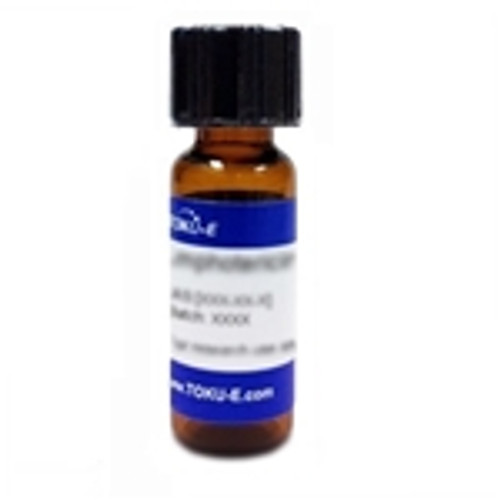Siccanin is an unusual fused phenolic pentacycle first isolated from Helminthosporium siccans reported in 1962 as a potent antifungal agent. Siccanin inhibits succinate dehydrogenase in the terminal electron transport system. More recent studies note the proximity of the Siccanin binding site to the quinone-binding site of the enzyme. Species-selective inhibition by Siccanin is unique among succinate dehydrogenase inhibitors and offers a lead for new chemotherapeutics.
Siccanin is soluble in ethanol, methanol, DMF and DMSO.
| Mechanism of Action | Siccanin inhibits succinate dehydrogenase in the terminal electron transport system. |
| References | Ishibashi KJ (1962) Studies on antibiotics from Helminthosporium sp. fungi. VII. Siccanin, a new antifungal antibiotic produced by Helminthopsporium siccans. Antibiot. Series A 15:161 Nose K and Endo AJ (1971) Mode of action of the antibiotic Siccanin on intact cells and mitochondria of Trichophyton mentagrophytes. J. Bacteriol. 105:176 Mogi TJ et al (2009) Siccanin rediscovered as a species-selective succinate dehydrogenase inhibitor. Biochem. 146:383 |



